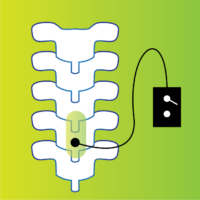Latest ICORD Research Studies:

National survey to explore opinions about a new experimental treatment under development for spinal cord injury that involves biomaterials
Mend the Gap is a group of 30 international scientists working closely with people with lived experience (PLEX) of SCI toward a new experimental treatment for SCI. The treatment involves a combination of drugs and an injectable biomaterial. The treatment Read More…
Access to Fly
The overall goal of the Access to Fly study is to use evidence and user-feedback to develop training recommendations and resources for airline and airport personnel. If you are an individual with SCI, we would like to learn about your Read More…
Youth with SCI and their experiences with physical activity
Adolescence and young adulthood is a critical time for developing personal identity, independence and social connections. Engaging in physical activity (PA) including sport, exercise and leisure time activity can support this growth. Additionally, individuals who are more active during these Read More…
Using Non-Invasive Temperature to Detect Ongoing Inflammation in the Human Spinal Cord
Inflammation is a natural part of the body’s defence system. It helps us heal and protects us from harm by activating and recruiting immune cells and helpful chemicals. After a spinal cord injury (SCI), however, this changes quickly, and inflammation Read More…
Understanding experiences with deployable ramps and platform to vehicle gaps
Accessible public transportation is crucial, yet many passengers encounter challenges when using ramps for buses or navigating train-to-platform gaps. This study assesses how effectively these ramps support boarding and evaluates gap features—such as dimensions and visibility—to ensure safety and usability. Read More…
Pelvic Floor Muscle Physiotherapy Study
The pelvic floor muscles are a group of specialized muscles in the pelvis that are important for urinary, bowel, and sexual function. In able-bodied people, physiotherapy programs that strengthen these muscles are a common treatment for symptoms of pelvic dysfunction Read More…
Vestibular Experience Study
When we move around our environments, our body uses special organs in our head/ears (the vestibular system) to monitor our movement and maintain balance. After a spinal cord injury (SCI), the vestibular system often has to adapt to new movement Read More…
Recreational Adaptive Devices (RAD) Study
ICORD researchers Dr. Ben Mortenson and Dr. William Miller have partnered with RAD Society to encourage outdoor recreational activity for individuals with mobility impairments. Together they have opened an adaptive device loan program in the City of Langford, BC and Read More…
Fear of falling and exercise self-efficacy in people with neurological disabilities who can walk: relationships between physical functioning and psychological outcomes
The SCI Action Canada Lab, under the guidance of Dr. Kathleen Martin Ginis, invites adults with spinal cord injury (SCI) whose primary mode of mobility is walking, to participate in a series of tests related to: balance, sit to stand Read More…

Non-invasive spinal cord stimulation in acute spinal cord injury for recovery of autonomic function
This study will measure the effect of non-invasive spinal cord stimulation on the recovery of bladder, bowel, sexual, heart, motor function, and muscle spasticity for people living with spinal cord injury (SCI). The study will also examine the impact of Read More…


